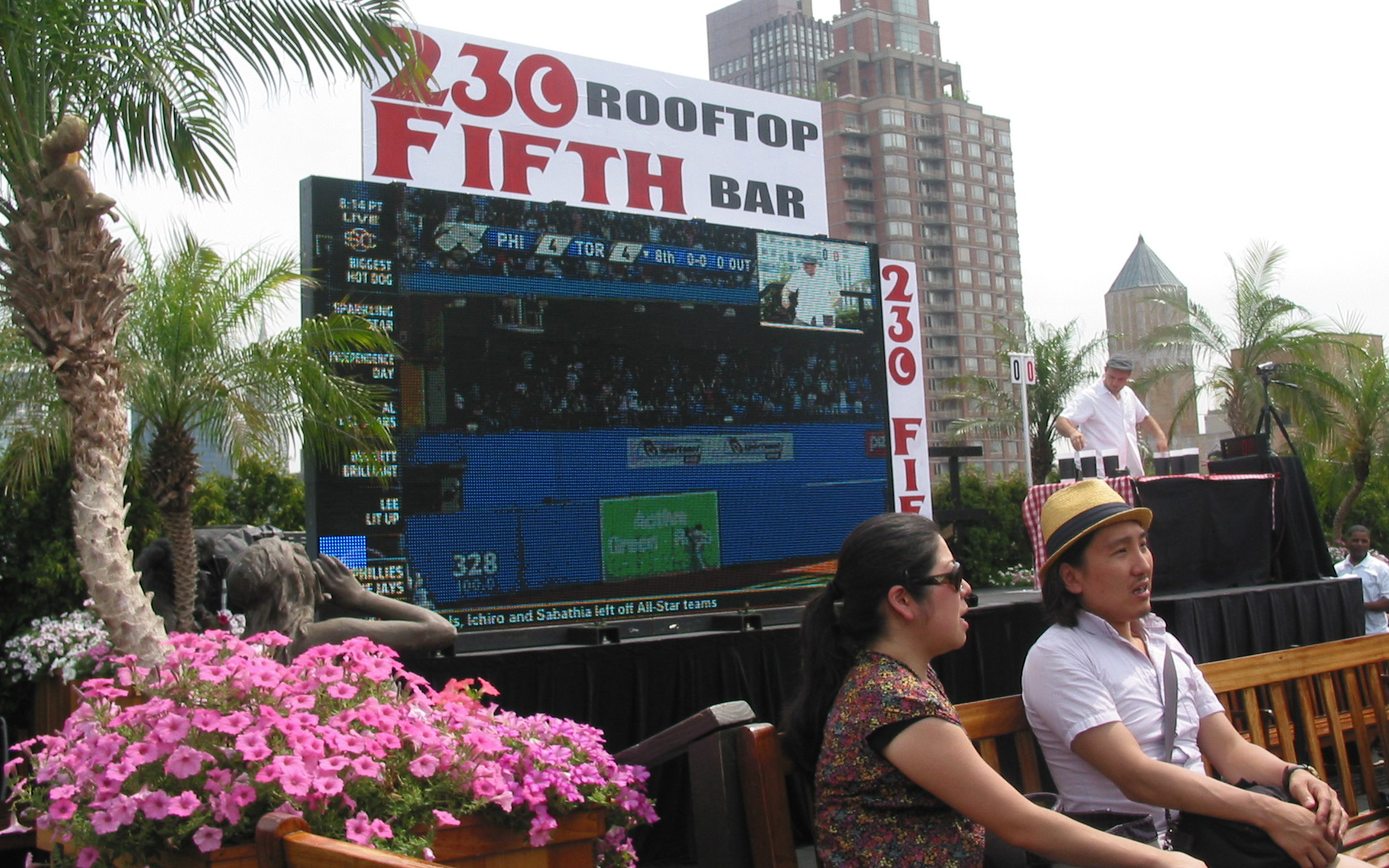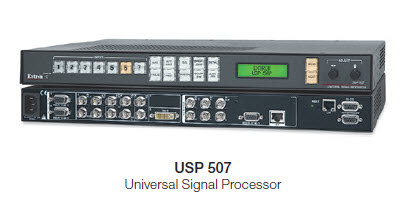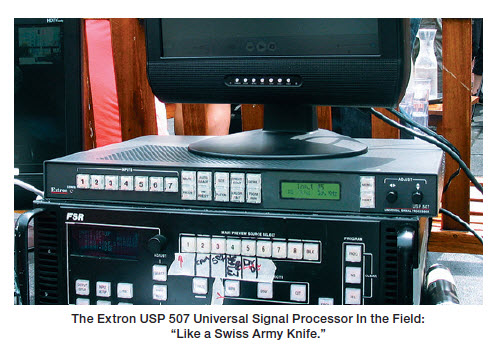
Extron Universal Signal Processor Solves Challenges in Covering Rival Speed Eating Competitions
Each year, Nathan’s Famous hot dog restaurant chain hosts the Fourth of July International Hot Dog Eating Contest, during which competitors consume as many as 60 hot dogs, with buns, in a ten minute span. The competition, sanctioned by the International Federation of Competitive Eating, is covered by ESPN and media from around the world.
A conflict with the IFCE led six-time champion Takeru Kobayashi to be banned from competition in 2010. This year, in retaliation, Kobyashi staged his own event. Both events were covered with the versatility of the Extron USP 507 Universal Signal Processor helping to address several AV system needs for these two live events.
The USP 507 was so versatile, like a Swiss Army knife, and it performed several functions we needed to make the event a success.
Ike Eckstein, CEO - Visual Word Studios, Inc.
The Official Competition
The official competition took place at the original Nathan’s Famous in Coney Island, Brooklyn, New York. For the third straight year, AV integrator Visual Word Systems, Inc. was contracted to display the live ESPN feed of the event on a 17 x 13 foot LED display wall mounted on a truck, for the tens of thousands of attendees. Visual Word Systems handled every aspect of the project, including system design, product acquisition, installation, and system integration, to ensure the client’s goals were fully met.
The ESPN live camera feed, and the integrator’s own video camera were fed through the USP 507 and an LED wall processor to the LED wall. In addition, a PC fed sponsor information through the USP 507 for display on the LED wall before and after the actual competition. The USP 507 is very popular with rental and staging integrators for its versatility in switching, scaling, transcoding, and converting between digital and analog video. For this application, the USP 507 provided a one-box solution for switching between broadcast SDI, RGB, and SD video signals, and optimizing them to a single output for the LED wall processor.
The Kobayashi Event
VWS was also hired to provide AV services for the Kobayashi event, which presented different challenges. According to CEO Ike Eckstein states, "The Kobayashi event was a first-time affair, with tight budgetary constraints, and everything was done on the fly. That made the USP 507 even more important because it’s so versatile, like a Swiss Army knife, and it performed several functions we needed to make the event a success."
The Kobayashi event was held at 230 Fifth, a rooftop bar and restaurant on the 19th and 20th floors of a New York City high rise. A 13’ x 7’ LED wall was erected in the bar to display the official Nathan’s competition, while Kobayashi sat at a picnic table beside the LED wall, facing a small audience, which included two contest judges. He began and stopped eating at the same time as the Nathan’s competitors shown on the LED wall. As a first-time live event, Eckstein was aware that nearly anything could happen. "The USP 507 helped us deal with any contingency," he says.
The live ESPN broadcast of the Nathan’s event was supplied by the restaurant’s digital cable provider. A video camera covered Kobayashi sitting beside the LED screen.
Signals from the ESPN cable broadcast, the Virtual Word Studios video camera, and a laptop for providing sponsor information, were sent through distribution amplifiers that split the signals and sent them to both a USP 507 and a third-party seamless switcher.
Because of budget constraints, using broadcast-grade video equipment for the production would have been too expensive, so VWS turned to a third-party seamless switcher it had on hand. This switcher provided the dissolve transitions VWS wanted when switching between sources. VWS also wanted PIP - picture-in-picture capability so that Kobayashi could be shown in a window within the ESPN broadcast. However, accessing the switcher’s PIP functions during a live event would be too cumbersome. The USP 507 therefore provided an additional PIP and switching source for the presentation that could quickly be accessed via the seamless switcher. “Because everything was on the fly and time sensitive," Eckstein says, “we depended on the USP 507 to quickly generate PIPs on demand."
A second USP 507 was used in the setup to record the event. The output from the seamless switcher was split via a DA to the LED wall processor and the USP 507, which in turn provided scan conversion and an SD output to a DVD recorder.
Results
Thanks to the flexibility of the USP 507, used as a switcher and scan converter and to generate PIP, both live events were successfully covered, and Kobayashi was able to virtually “compete” with the Nathan’s contestants, besting Nathan’s champion Joey Chestnut 69, hot dogs to 62, and breaking Chestnut’s world record by one hot dog.




 Chrome
Chrome
 Firefox
Firefox
 Edge
Edge
 Safari
Safari